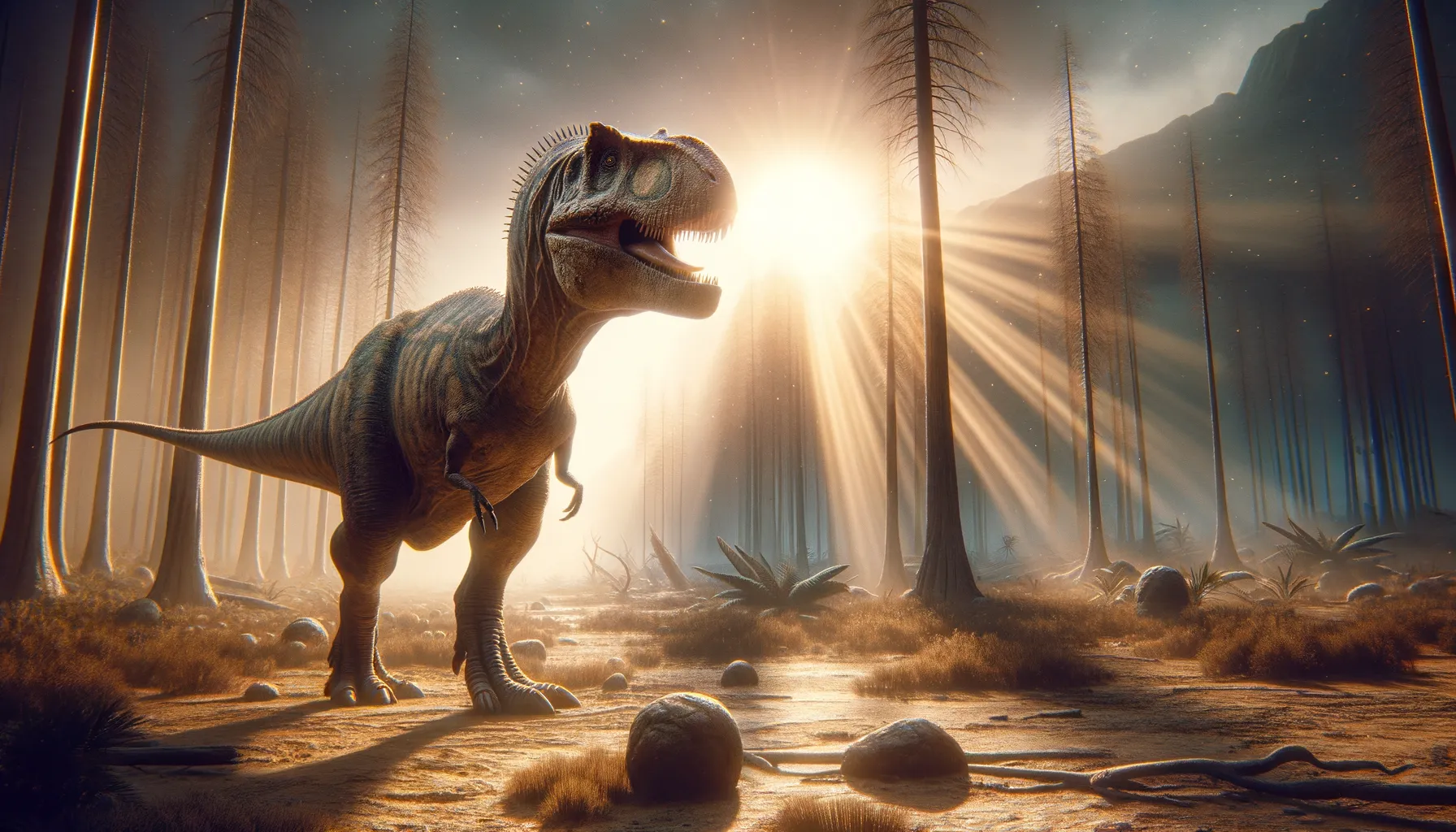
Daurosaurus
The gentle giant of the Cretaceous wilderness.
Period
Cretaceous
Length
Over 20 feet in total length.
Height
Around 15 feet tall.
Weight
Approximately three tons.
Daurosaurus was a formidable dinosaur species that roamed the earth during the Cretaceous period. Known for its moderate size and distinctive physical features, it captured the curiosity of paleontologists worldwide. Discovered in Mongolia, this dinosaur offers valuable insights into the diverse ecosystems of its time. With a herbivorous diet, Daurosaurus played a crucial role in the food chain, maintaining the delicate balance within its ancient habitat.
Diet
Daurosaurus was primarily a herbivore, feeding on a variety of plants. Its diet included leaves, ferns, and possibly some fruits, allowing it to thrive in the lush Cretaceous environments.
Hunting
Being herbivorous, Daurosaurus did not hunt other animals. Instead, it foraged for plant material, using its keen senses to locate food sources. Its lifestyle was relatively peaceful, focused on grazing and browsing rather than hunting.
Environmental challenges
Daurosaurus faced several environmental challenges, including climate fluctuations in its habitat. These changes could affect the availability of food sources, requiring adaptability in its diet. Predation by larger carnivorous dinosaurs was another threat, necessitating the use of its size and herd behavior for protection. Additionally, competition for resources from other herbivores required strategic grazing habits.
Speed
Moderate, similar to modern-day large reptiles.
Lifespan
Estimated to be around 30 years.
First discovery
Found in Mongolia, early 21st century.
Fun Facts
- Daurosaurus was a plant-eating dinosaur that lived during the Late Cretaceous period.
- The name 'Daurosaurus' means 'Daourian lizard' and was named after the region where its fossils were found in Mongolia.
- Daurosaurus is known for having relatively small and lightweight body, making it a nimble herbivore.
- It was a part of the Hadrosauridae family, commonly known as duck-billed dinosaurs.
- Daurosaurus had a range of chewing adaptations allowing it to munch through a variety of tough plants.
- Despite its name including 'saurus', which often denotes a fierce predator, Daurosaurus was a gentle grazer.
- Discovery of Daurosaurus remains is rare, making it a mysterious dinosaur which is not fully understood yet.
Growth and Development
Daurosaurus likely experienced slow and steady growth throughout its life. Juveniles would have relied on adults for protection in their early years. As it matured, it developed strong limbs for supporting its bulk and efficient digestive systems for processing plant material. Reaching full size took several years, during which it rapidly became a key part of its ecosystem.
Habitat
The habitat of Daurosaurus was characterized by dense forests and open plains. These regions provided ample vegetation for its herbivorous diet. Proximity to water sources was crucial for its survival, as it required constant hydration. The varied landscape offered both protection and resources, shaping its behavior and interactions with other species.
Interaction with other species
Daurosaurus coexisted with a wide range of species, from small mammals to massive predators. It maintained a relatively peaceful existence, avoiding conflict when possible. Social behavior within its species involved forming herds for mutual protection against predators. Interactions with carnivorous dinosaurs were typically defensive, using size and numbers to deter attacks.
Natural lifespan
In the wild, its natural lifespan could reach up to 30 years.
Reproduction
Daurosaurus likely laid eggs in nests constructed from vegetation and soil. Parental care might have been limited, with hatchlings needing to quickly adapt to their environment. Reproduction cycles were seasonal, ensuring young emerged during times of abundant food. Social herds could have provided some communal defense against predators during vulnerable nesting periods.
Social behaviour
Daurosaurus exhibited strong social behavior, often forming herds. These groups provided safety in numbers, deterring predators through collective vigilance. Communication among herd members likely involved vocalizations and physical displays. This social structure was crucial for survival, ensuring protection and group cohesion in the diverse Cretaceous habitats.
Fossil locations
Fossils of Daurosaurus have primarily been found in Mongolia, offering insights into its distribution. These sites reveal both juvenile and adult specimens, aiding research on its growth and development. The fossil record in this region provides a glimpse into the diverse ecosystems of the time. These findings have been pivotal in understanding the environmental context and interactions of the species.
